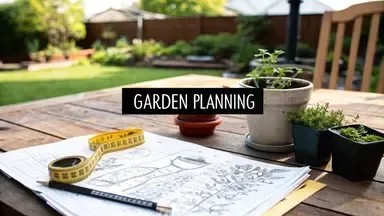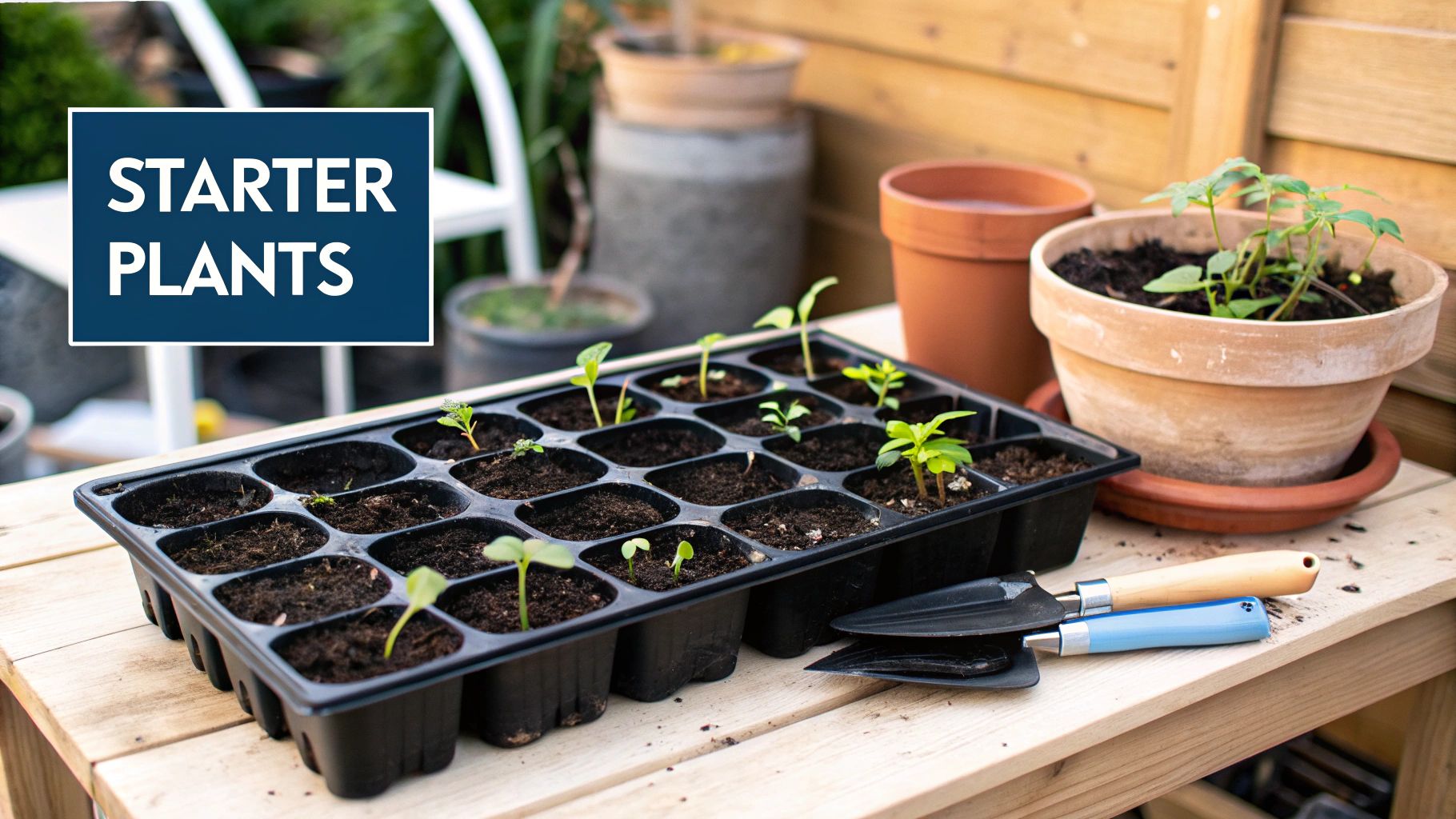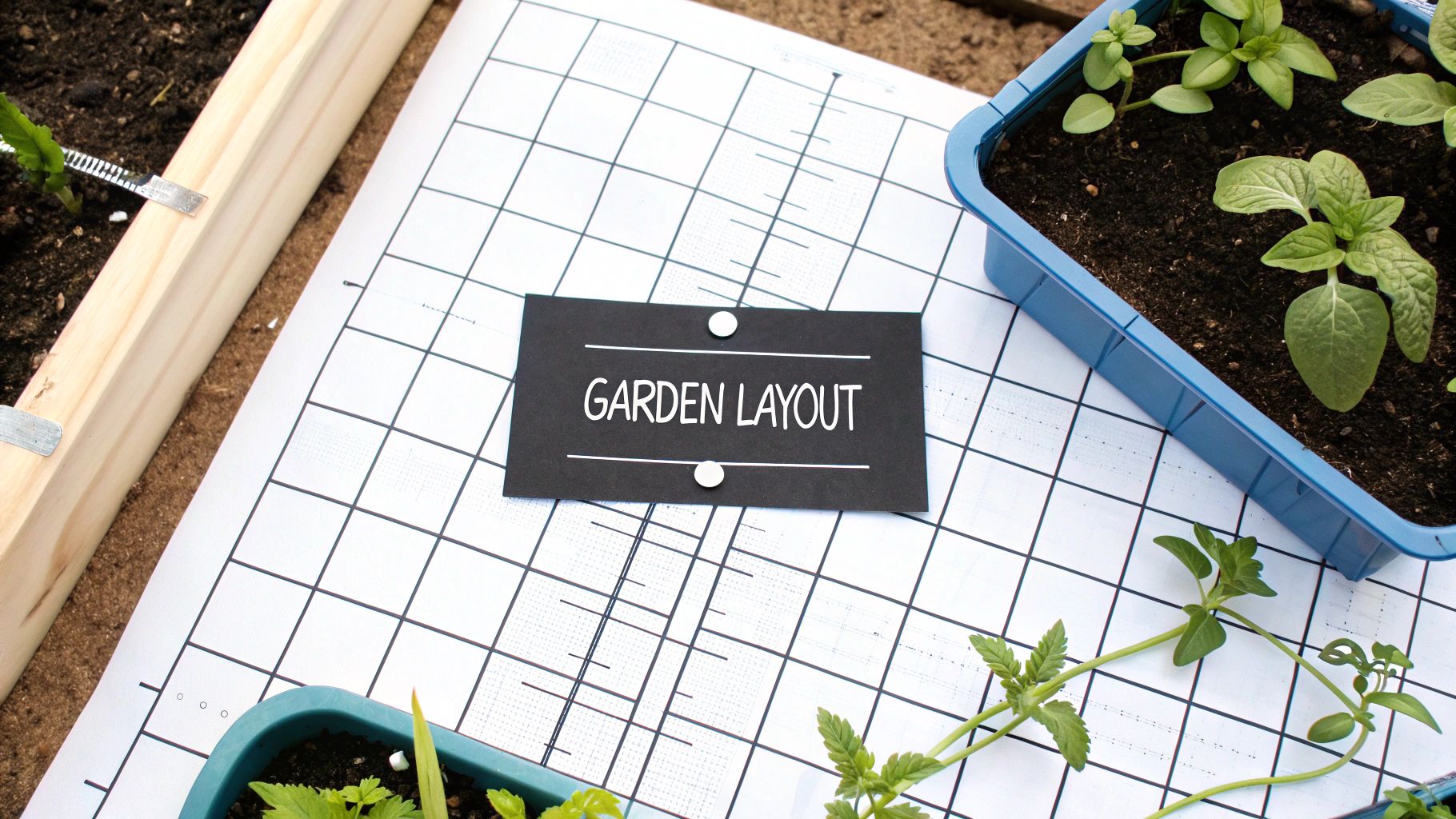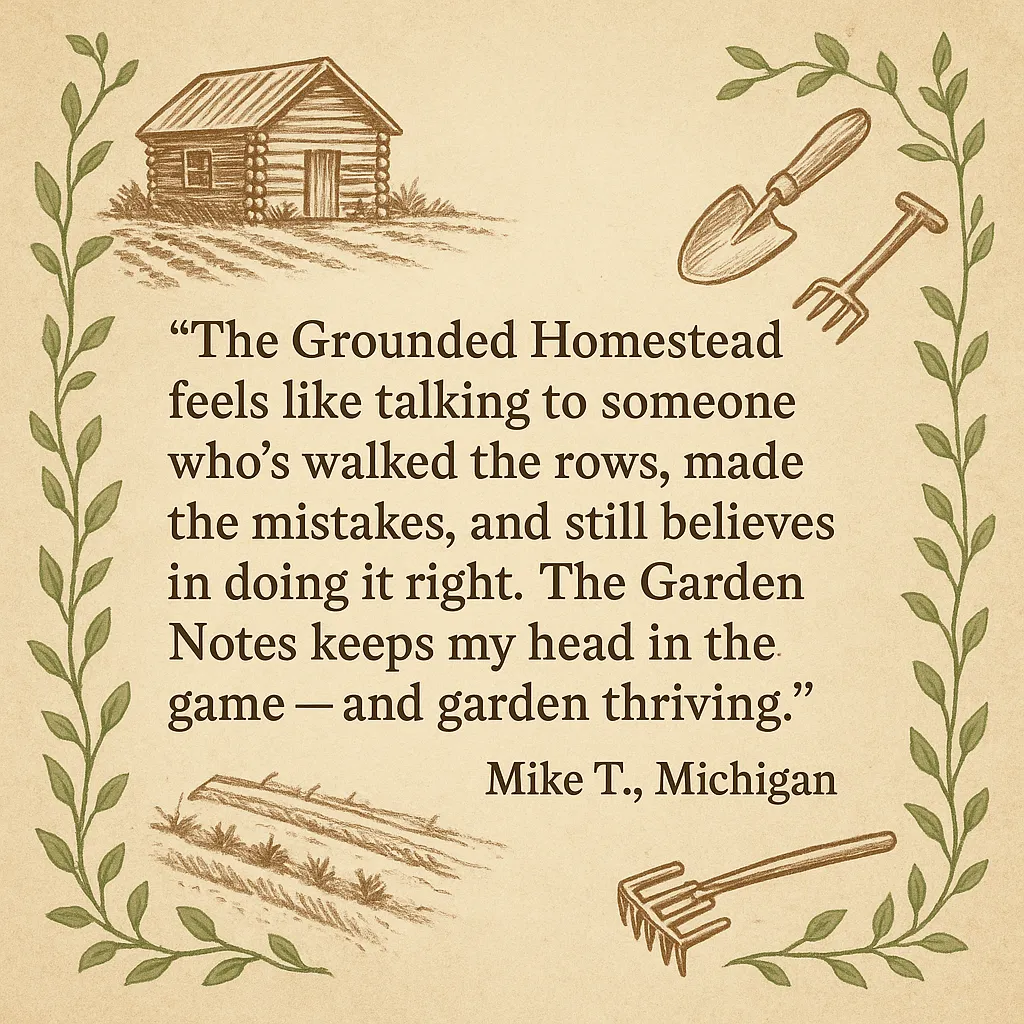
Garden Planning for Beginners: Your Complete Starter Guide
Garden Planning for Beginners: Your Complete Starter Guide
Understanding Your Space and Setting Real Expectations
Before you even think about buying a single seed packet or a cute pair of gardening gloves, let's have an honest conversation. The beautiful, sprawling gardens you see on Pinterest and Instagram often hide the reality of a first season: the trial, the error, and the unexpected challenges. Many new gardeners jump in with grand visions, only to feel overwhelmed when their plot doesn't immediately match the picture in their head.
The secret to a successful start isn't perfection; it's a solid understanding of your actual space and setting achievable goals that build your confidence. The best garden planning for beginners starts not at the store, but right in your own yard.
Becoming a Sunlight Detective

The single most critical factor for most vegetable gardens is sunlight. Many popular crops, like tomatoes, peppers, and squash, are sun-worshippers, needing at least 6 to 8 hours of direct sunlight every day to produce well. Your first task is to become a sunlight detective.
Here's a simple, effective way to figure out your sun exposure:
Observe at Different Times: Take a walk around your yard in the morning (around 9 AM), at midday (around 1 PM), and in the afternoon (around 4 PM).
Note the Shadows: Pay close attention to where shadows fall from your house, large trees, or your neighbor's fence. That perfect-looking spot in the morning might be in complete shade by 2 PM.
Sketch a Simple Map: Grab a piece of paper and draw a rough outline of your yard. Shade in the areas that lose sun throughout the day. This simple "sun map" is one of the most valuable tools in your garden planning toolkit.
Don't be discouraged if you don't have a full-sun paradise. Many wonderful plants, like lettuce, spinach, kale, and some herbs, do perfectly well in partial sun (4-6 hours). Knowing your light conditions from the start prevents the heartbreak of planting sun-loving crops in a shady corner where they're doomed to fail.
Matching Your Garden to Your Life
Now, let's talk about size and time. It’s tempting to plan a massive garden that will feed the entire neighborhood, but a smaller, well-managed plot is far more rewarding than a large, weed-infested one. Your available time is just as important as your available space.
Be realistic about your weekly schedule. Do you have a few hours to dedicate on the weekend, or just 15-20 minutes each evening after work?
To help you get a sense of scale, here’s a quick guide to what different garden sizes might look like in terms of effort and output.

For a deeper dive into garden yields and time commitments, you can explore detailed resources like The Grinning Gardener's Handbook.
The takeaway here is that for most beginners, starting small is the wisest path. A 4x8-foot raised bed or a few large containers can produce an amazing amount of food and is much easier to keep on top of. Remember, you can always expand next year. The goal for your first season is to learn and build momentum, not to create a second full-time job for yourself. A small victory is infinitely better than a large failure.
Choosing Plants That Want to Succeed With You
After you’ve figured out your sunlight and decided on a garden size that feels right, it’s time for the best part: picking the plants. It's so easy to get carried away by a seed catalog filled with exotic, rainbow-colored vegetables. But for your first year, the smartest move is to choose plants that are practically guaranteed to grow with minimal drama. Think of them as your garden's confidence-building team.
Choosing plants that are happy to grow in your specific conditions is the secret to a satisfying first harvest. This isn't about crushing your gardening dreams; it's about building a foundation of success that will make you want to come back for season two. A few happy zucchini plants are way more encouraging than a sad patch of struggling melons.
Start with the Superstars
Some plants are just more laid-back than others. They can handle a wider range of soil types, bounce back if you forget to water them once or twice, and still give you a generous harvest. These are the perfect candidates for your first season. If you're wondering what to plant, you're not alone. In 2023, data showed that about 55% of U.S. households were into gardening, and they overwhelmingly started with reliable crops. Tomatoes are grown by 86% of home gardeners, with other easy wins like lettuce, cucumbers, and beans following close behind. You can explore more of these national gardening trends and statistics to see what others are growing successfully.
So, what should be on your "must-grow" list?
Leafy Greens: Things like lettuce, spinach, and Swiss chard sprout quickly and often let you harvest leaves multiple times from the same plant. They're the sprinters of the vegetable world.
Radishes: Famously fast, radishes can go from a tiny seed to your salad in less than a month. They are the ultimate crop for instant gratification.
Zucchini/Summer Squash: Give these plants enough sun and water, and you’ll likely end up with so much zucchini you’ll be leaving it on your neighbors' doorsteps.
Bush Beans: Unlike their cousins that need a tall trellis to climb, bush beans are compact and don't require a lot of support. They're productive and very low-maintenance.
To help you choose what to plant and where, I've put together a table looking at some of the most beginner-friendly vegetables. It breaks down how likely you are to succeed, how long you'll have to wait for a harvest, and how much space they need.

This data shows that focusing on fast-growing, low-difficulty crops like radishes and leafy greens can give you quick wins and build momentum for the rest of the season.
Matching Plants to Your Zone and Tastes
Beyond just picking "easy" plants, you need varieties that are a good fit for your local climate and hardiness zone. A quick search for "[Your City] plant hardiness zone" will give you this critical number. The zone tells you which perennial plants can survive winter in your area and helps you figure out the best planting times for annual veggies.
Finally, let's be practical: what does your family actually like to eat? There’s no joy in growing a massive crop of kale if everyone in the house avoids it. Make a quick list of your top five favorite vegetables. Now, see which of those are on the beginner-friendly list and are suited for your zone. This little bit of planning ensures your harvest will be something to celebrate, not just compost.
If you’re dreaming of fruit, some are much easier for beginners than others. While an apple tree is a long-term commitment, some berries can be incredibly rewarding. If you're looking for a great perennial fruit option, you might want to read our guide on how to start with strawberries, a garden fruit that grows back year after year.
By starting with reliable, well-suited, and delicious plants, you're not just putting seeds in the ground—you're setting yourself up for a successful and fun gardening adventure.
Designing a Layout That Actually Works for You

With a list of plants ready to grow, it's time to give them a home that makes sense. Good garden design isn’t about creating a picture-perfect plot for social media or forcing perfectly straight rows. The best garden planning for beginners is about creating a space that makes your life easier. A smart layout saves you time, prevents backaches, and turns daily maintenance into an enjoyable ritual instead of a frustrating chore.
The real goal is to build a garden that works for you, not against you.
Pathways and Bed Dimensions
One of the most common mistakes I see new gardeners make is creating garden beds that are just too wide. In the excitement of maximizing planting space, they build something they can't easily reach the center of. This leads to stepping on the soil, which compacts it and hurts root growth, or straining your back every time you need to weed or pull a few carrots.
Here’s a simple rule of thumb: make your garden beds no wider than four feet across if you can access them from both sides. If a bed is up against a fence or a wall, keep it to a maximum of two to three feet wide. This ensures every plant is within comfortable arm's reach. For pathways, give yourself at least 18 to 24 inches so you can move comfortably with a watering can or wheelbarrow.

Thinking in Zones
Experienced gardeners don't just see one big garden; they see zones. This is just a practical way of grouping plants with similar needs together, which makes watering, feeding, and harvesting much more efficient.
Here’s how you can think in zones for your own plot:
Watering Zones: Group thirsty plants like cucumbers and squash in one area. This way, you can give them the deep soaking they love without overwatering drought-tolerant herbs like rosemary or thyme, which can be planted together elsewhere.
Sunlight Zones: Even within a "full sun" area, you'll have microclimates. Put your most sun-hungry plants, like tomatoes and peppers, in the absolute sunniest part of the bed. Taller plants should be planted on the north side of the bed so they don’t shade out their shorter neighbors. Our tomato growing guide for beginners has some great tips for giving sun-lovers exactly what they need.
Harvest Zones: Plant things you'll pick often, like leaf lettuce and herbs, near the edge of the bed for easy access. These are often called "cut-and-come-again" crops. Plants that you harvest all at once, like carrots or onions, can be placed further back.
Layout Options for Beginners
You don’t need any fancy design software to get started. A simple piece of graph paper and a pencil are your best friends here. Sketching out a few ideas will help you visualize the space. Here are a couple of classic, functional layouts that work wonders.

Ultimately, your layout should feel practical and comfortable for you. By planning for easy access, grouping plants by their needs, and choosing a simple, effective design, you’re creating a garden that will support your efforts all season long. This thoughtful foundation is a huge step toward building a productive space you’ll love spending time in.
Creating a Planting Schedule That Fits Your Life

Once you’ve sketched out your garden layout, the next layer of smart garden planning for beginners is timing. This is where a lot of new gardeners freeze up, picturing complex charts and rigid deadlines that feel impossible to keep. But a planting schedule isn't about becoming a slave to your calendar; it's about finding a simple rhythm that works with your local climate and, most importantly, your real life.
A good schedule keeps you from feeling overwhelmed and helps your garden stay productive. It turns your new hobby into a source of relaxation, not a stressful second job. The foundation of your entire schedule rests on two key dates: your average last spring frost and your average first fall frost. A quick online search for "[Your City] frost dates" will give you what you need. These dates define your growing season and act as anchors for all your planting decisions.
A simple soil thermometer takes the guesswork out of planting. When the ground hits the right temperature, you know your seeds will sprout strong
Mapping Out Your Core Seasons

Instead of staring at one giant, intimidating calendar, it’s much easier to think of your gardening year in four distinct phases. This approach breaks the work into manageable chunks and helps you know what’s coming next.
Early Spring (4-6 weeks before last frost): This is the time for cool-weather lovers. As soon as you can easily work your soil without it being a muddy mess, you can plant seeds for hardy crops like spinach, radishes, and peas. These plants don’t mind a little chill and will be ready to harvest before the summer heat kicks in.
Late Spring (After last frost date): This is the main event! Once the danger of frost is gone, it’s go-time for warm-weather plants like tomatoes, peppers, squash, and beans. This is also when you'll transplant any seedlings you started indoors or bought from a nursery.
Summer & Succession Planting: Your schedule doesn't end after that first big planting day. As you harvest early crops like radishes or lettuce, you'll open up empty spots in your garden. This is your chance for succession planting—filling that gap with another round of fast-growing crops. For example, after I pull my garlic in mid-summer, I often plant a quick crop of bush beans in its place for an autumn harvest.
Late Summer/Fall (6-8 weeks before first frost): Just like you planted cool-weather crops in the spring, you can do it again for a fall and winter harvest. Put in more lettuce, spinach, kale, and carrots. These "fall crops" often develop an even sweeter flavor after a light frost touches them.
Keeping It Real and Flexible
Let's be honest, life happens. You’ll go on vacation, have a frantic week at work, or just not feel like getting your hands dirty. That's perfectly okay. Your schedule should be a guide, not a set of strict rules you have to follow. The real key is to be realistic with yourself.
If you know June is always a chaotic month for you, plan to get your main planting done by the end of May. If you have a two-week trip planned in August, don’t plant crops that need to be harvested daily during that time. Your planting schedule is a personal tool. Start simple by focusing on the main spring planting and maybe one or two succession crops. As you get a season or two under your belt, you'll develop a natural feel for the rhythm of your own backyard.
Sourcing Quality Materials Without Breaking Your Budget
With your plant list and layout ready, it’s time to gather your supplies. This is the moment where a beginner’s excitement can clash with a budget’s reality. It's so easy to wander into a big-box store and emerge with a cart full of shiny gadgets and expensive bagged soil you might not even need. Smart garden planning for beginners isn't about buying the most stuff; it's about knowing where to invest for the biggest impact and where you can be frugal.
A successful garden is built on strategic choices, not a high price tag. Let's break down where your money is best spent.
Investing in the Foundation: Your Soil
If you’re going to put your money anywhere, make it the soil. The health of your plants is a direct reflection of what’s happening underground. Everything they need to grow strong and fend off pests comes from the earth. Trying to save a few bucks here by filling beds with cheap, nutrient-dead topsoil is a direct path to frustration.
I’ve seen it time and again: a new gardener spends a fortune on a fancy raised bed kit, only to fill it with the cheapest "garden soil" they can find. You are far better off building a simple, low-cost bed and filling it with the best soil you can get your hands on. Look for a quality mix that contains:
Compost: This is the one non-negotiable ingredient. Compost is the lifeblood of a healthy garden, providing a slow-release source of nutrients, improving soil structure, and helping hold onto moisture.
Topsoil: This gives the soil its basic mineral structure.
Aeration Material: Ingredients like pine bark fines, perlite, or vermiculite keep the soil from becoming a compacted brick, which allows plant roots to breathe.
Many local landscape supply companies sell high-quality garden soil blends by the cubic yard. If you're filling anything larger than a small container, this is often much more affordable than buying dozens of individual bags from a hardware store. Don't be shy about asking them what’s in their "garden mix."
Smart Tool and Seed Sourcing
You don’t need an entire shed overflowing with specialized tools to get started. My grandpa always used to say, "The cheap pay twice," and this is especially true for garden tools. Instead of buying a flimsy, all-in-one kit that will break by mid-season, invest in a few high-quality basics that will serve you well for years.
Essential Tools for a Beginner:
A Sturdy Hand Trowel: You'll use this constantly for digging small holes and transplanting seedlings.
Bypass Pruners: These make clean cuts when you're harvesting or trimming plants. Please don't use scissors, as they can crush and damage the plant's stems.
A Watering Can or a Quality Hose Nozzle: A nozzle with multiple spray patterns is incredibly useful for different watering needs.
Durable Gloves: A good pair makes weeding, planting, and other garden tasks much more comfortable.
When it comes to seeds, it’s tempting to grab every interesting variety you see on the rack. This often leads to wasted seeds and feeling overwhelmed. For your first year, stick to your plan. Buy seeds only for the plants you know you have space for and will actually eat. High-quality seeds from reputable companies have better germination rates, meaning more of them will sprout successfully. While you can find cheap seeds at dollar stores, spending a little more on a trusted brand often pays off with stronger, healthier plants from the get-go.
Remember, your goal is a successful harvest, not a massive seed collection.
Troubleshooting When Things Don't Go as Planned
No matter how much you plan, there will come a day when you walk outside and something is just… off. Maybe your lettuce leaves are riddled with tiny holes, your squash plants are covered in a strange white powder, or a plump rabbit is treating your bean patch like a personal buffet. Welcome to the real world of gardening! Every single gardener, from the first-timer to the seasoned pro, faces setbacks. The key isn't avoiding problems entirely—it’s learning how to respond without panicking.
This is where your journey really begins. Building problem-solving skills is as important as learning to plant. Instead of seeing a pest or a wilting plant as a failure, view it as a puzzle to solve. This mental shift is crucial for long-term enjoyment. Your garden is a living, changing space, and unexpected events are just part of the experience.
Common Beginner Challenges and How to Respond
Let's walk through some of the most frequent hurdles you might run into. The goal isn't to blast everything with chemicals but to figure out the root cause and find a simple, effective solution. Understanding what you're looking at is the first step.
Pest Problems: You notice tiny green insects clustered on the new growth of your kale. These are likely aphids. Instead of reaching for a commercial pesticide, your first line of defense is a strong jet of water from your hose. This can often dislodge them. If they come back, a simple homemade soap spray (a teaspoon of mild dish soap in a spray bottle of water) can work wonders. The secret is to act early before the population gets out of hand.
Disease Dilemmas: A white, dusty coating on your zucchini leaves is probably powdery mildew, a common fungal issue, especially in humid weather. You can fight this by improving air circulation—simply prune a few of the lower leaves. Also, try to water the soil at the base of the plant, not the leaves, since wet foliage is an open invitation for fungus.
Disappointing Harvests: Maybe your lettuce bolts and turns bitter, or your tomato plants are huge and green but have very few actual tomatoes. Bolting in lettuce is often caused by heat stress; planting it earlier in spring or in a spot with afternoon shade can help. To dig deeper into this specific issue, check out our guide on common lettuce problems and how to fix them. For tomatoes, a lack of fruit can be due to too much nitrogen fertilizer (which promotes leaf growth) or extreme temperatures messing with pollination.
When to Worry and When to Wait
Part of gaining experience is learning to tell the difference between a real crisis and a minor hiccup. A few chewed leaves are rarely a cause for alarm, but an entire plant stripped bare overnight points to a bigger problem (hello, deer or groundhogs!). Likewise, one yellowing leaf at the bottom of a plant is often just an old leaf dying off naturally, which is perfectly normal. However, if the new growth at the top is yellow, that’s a signal that something is off, often a nutrient deficiency.
Your best tool for troubleshooting is simply walking through your garden every day. A quick five-minute stroll will help you spot issues when they are small and manageable. You’ll start to learn the normal rhythms of your plants, making it much easier to notice when something is amiss. Don't be afraid of these challenges; they are your most valuable teachers on the path to becoming a confident, resilient gardener.
Building Long-Term Garden Success and Confidence
A truly great garden isn’t a project with a finish line; it’s an evolving space that grows and changes right along with you. The most successful and joyful gardeners I know didn't just achieve a state of perfection and then stop. Instead, they built habits that allowed their passion and their plots to mature together. Your journey doesn't end after that first exciting harvest. It’s about building a foundation for years of rewarding work.
The real secret to lasting success is learning to embrace this evolution. It’s about shifting from someone who just follows a rigid plan to a gardener who observes, adapts, and experiments with confidence. This is where the real magic happens.
The Art of Observation and Smart Experimentation
Your most powerful tool for long-term success is daily observation. A quick five-minute walk through your garden each morning, maybe with a cup of coffee in hand, is more valuable than any book you can read. This simple habit helps you catch the little things: the first signs of a pest, a plant that’s starting to wilt, or a new bloom about to open. This connection turns you from a manager into a partner with your garden.
This is also where smart experimentation comes in. Don't be afraid to try something new each season, but keep it manageable. Maybe one year you dedicate a corner of a raised bed to a new tomato variety to see how it stacks up against your old favorite. Or perhaps you tuck some marigolds around your tomatoes to see if it really helps with pests. Small, controlled experiments are how you build practical, first-hand knowledge without risking your entire garden. This isn't about chasing trends; it's about satisfying your curiosity and learning what works in your unique space.
Keeping Records That Actually Help
The idea of a garden journal can feel like homework, and a complicated, detail-heavy one is usually abandoned by June. Instead, find a simple system that you’ll actually stick with. A basic notebook, a note-taking app on your phone, or even just snapping a few photos with captions can be incredibly effective.
So, what should you track? Focus on the details that will make next year easier:
What you planted and where: A quick sketch of your layout is priceless next spring when you can't remember a thing.
Key dates: Note when you sowed seeds, when they sprouted, and when you got your first harvest.
Hits and misses: Which zucchini variety went wild? Which peppers struggled in that shadier spot?
Pest or disease issues: A simple note like "aphids on kale, mid-June" can help you be proactive the following year.
This simple log becomes your personal garden guide, tailored specifically to your climate and soil. After just one season, you’ll have a wealth of information more relevant to your success than any generic advice you could find online.

Expanding Strategically and Connecting with Others
As your confidence grows, so will your ambitions. It’s natural to dream of a bigger garden. The key is to expand strategically. Instead of trying to double your garden's size all at once, consider adding just one new raised bed or a few extra containers each year. This gradual growth allows your skills and time commitment to keep pace, preventing you from getting overwhelmed.
Finally, don’t garden in a vacuum. Connecting with a local gardening club, a community garden, or even an online forum focused on your region can be a huge boost. Sharing struggles, celebrating wins, and swapping seeds with other gardeners creates a support system that keeps you motivated. Learning from the experiences of others, especially those who have been at it for years, fast-tracks your own learning and deepens your enjoyment of the entire process.
This journey from beginner to confident grower is one of continuous learning and celebration. At The Grounded Homestead, we're here to provide the knowledge and support you need every step of the way. Explore our resources at The Grounded Homestead to continue building your skills and find inspiration for your thriving garden.



Facebook
Instagram
X
Youtube